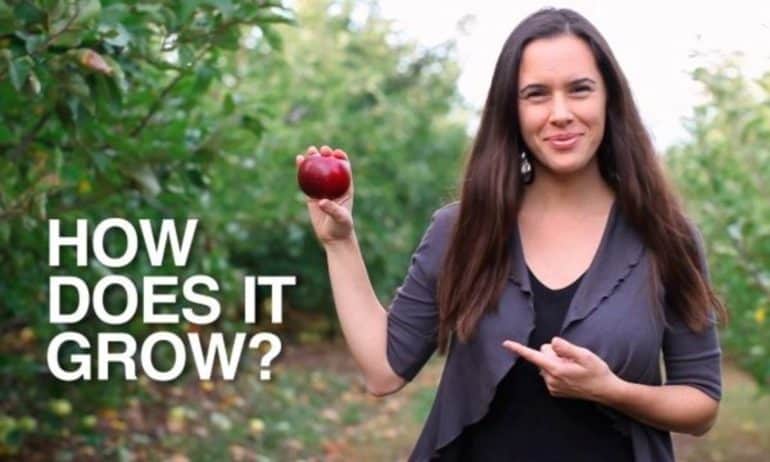Nothing drives home the realization that we’re disconnected from our food like a shiny red apple.
Americans eat more apples than any other whole fruit (except bananas — which aren’t grown commercially in the United States). If you have fruit in your kitchen right now, it probably includes an apple. Yet, your idea of how apples are grown is probably, well, far from accurate.
The cycle of apple growth seems so simple: seed, tree, fruit. But, according to the veteran apple harvesters in the accompanying video, that’s wrong!
In the first 20 seconds, episode five of “How Does it Grow?” — the nonprofit video series tracing our food from field to fork — reveals that the seeds inside every apple are genetically unique: they won’t grow the same apple as the one they came out of.
So what do farmers have to do to grow an entire orchard of Granny Smiths or Honeycrisp? Well, you’ll have to watch the video to find out (hint: it involves a technique that’s been practiced for millennia).
As we watch the story of apple cultivation, the information we glean about America’s favorite fruit has the power to do more than inspire mere appreciation for this nutritious snack (though that in itself is certainly good). It inspires us to think about the wider food system; for instance, if the market demands only a handful of apple varieties, what does this mean for biodiversity?
Learning the most basic (yet fascinating) knowledge of how our food grows gives us the necessary foundation to understand and contextualize such challenges. Otherwise, the ills of the modern food system seem abstract and distant — problems that don’t directly affect our lives, and are meant for others to deal with.
But they’re not. These challenges are as close to us as the apples we eat — the apples that, coincidentally, have been the symbols of teaching and education for centuries.
To watch more How Does it Grow? videos go to howgrow.org.















